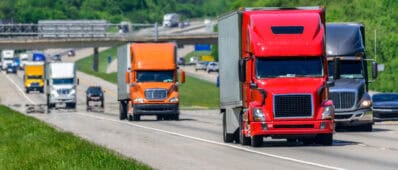Abstract
California possesses multiple major freight gateway and logistics facilities that serve both the state and the entire U.S. But the economic, environmental, and local community impacts of trucks, especially heavy-duty trucks that are currently essential to our supply chains and freight transportation system remain poorly measured due to the lack of comprehensive and detailed truck activity data. This paper describes the pilot implementation of the real-time, scalable, and cost-efficient Freight Mobility Living Laboratory (FML2). This system provides truck characterizations across multiple attributes, such as truck body types, axle-based and Gross Vehicle Weight Rating (GVWR)-based classification and is currently deployed at 30 detection locations in Southern California along major freight corridors to support freight modeling and analysis needs. This paper details the design of the FML2 from edge data processing, predictive model development, communication architecture, and backend data storage to the real-time data dashboard to visualize the classification results. Three case studies have been presented at the end of the paper to demonstrate the potential of FML2 for use by both researchers and practitioners to gain further insights on truck activities.



